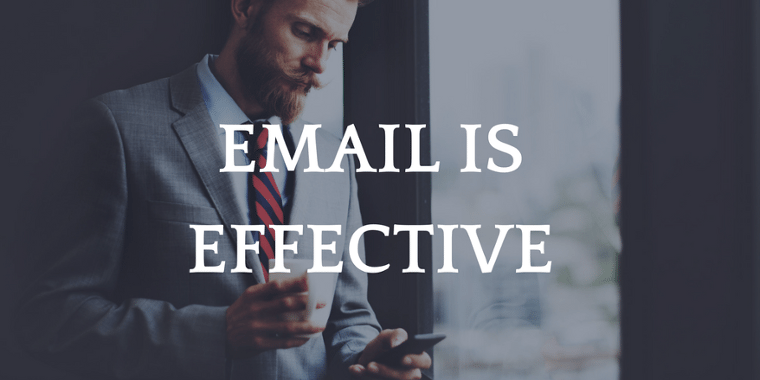According to the DMA National Client Email Report 2015, the average ROI from email marketing is $38 for every $1 spent. Also reported that 9 out of 10 clients perceive email marketing as a channel of importance. Email is the perfect place for your message to be taken seriously while achieving a substantial return. In just a few simple steps you can start planning your launch of an email campaign today!

Email marketing is unique, because unlike social media or blogging, the audience invites you into their personal space. On top of that, you control the message. Like everything in business, launching an email marketing campaign starts with making a plan. Your plan must define your goals, audience, content, and success measurements.
STEP 1: PLAN

Define your goals for you email marketing campaign. A few common goals of email marketing are to:
- Build and nurture leads
- Enhance your brand
- Inform or educate
Your Goal Determines Your Strategies
Maybe you have a combination of goals you’d like to achieve through your email efforts. You can use an email planning template to help with multiple goals and campaigns. One benefit of an email marketing campaign is you can use analytics to measure the results of each email you send out. Your goals will help determine your audience and how to segment your lists. Mostly, your goal will determine the content you create for your email marketing.
Creating and segmenting lists is a vital step for advisors when launching an email campaign. Do you have a list already or will you need to start building one? If you already have a list, is it a clean list and CAN-SPAM compliant? Maintaining compliancy and keeping a clean list can be challenging at first but just takes time up front.
List Segmentation = Personalization
Segmenting your lists is the best way to personalize the messages you send. There are many different ways to segment a list. For starters, you can create a simple demographic like using location. When your services cover more than one location, send local messages that pertain to the reader within each area.
Another way to segment your lists is by the types of services you offer. Prospective clients won’t be utilizing every service you offer. By segmenting lists by service you create relevancy in each message you send. This also allows you to cross promote services that are related to each other.
Ultimately, the best way to segment lists is with a buyer persona. A truly defined buyer persona is an extremely detailed description of who your buyer(s) is, what roles they play, their interests, and motivations. It’s in-depth, but it doesn’t need to be difficult. To make it easy for you, we’ve created a worksheet to help you define your buyer persona.
STEP 2: CREATE CONTENT

You can create client-centered content by referring to your buyer persona and using a tone they would relate to.
What Should Your Emails Say?
Depending on the goals you set out for your email campaigns and personas, your content may significantly vary by list segments.
Monthly emails could include:
- Company updates
- Financial industry updates
- Investment trends
- Regulation changes
Another important factor in content planning is knowing where your readers are in the buyer’s journey. When nurturing leads through the buyer’s journey, the content will change in each stage.
When creating emails for prospects in the awareness stage, the message should be more broad yet still show value to the reader. Messages to those in the consideration stage may include more insider tips that would help further their knowledge of a specific service or the financial industry. When emailing a reader in the decision stage, messages can be more brand-specific to your company. Include a variety of text, images, and calls-to-action (CTAs) in the message.
STEP 3: ANALYZE & REFINE

Another wonderful part of email marketing is the use of analytics to improve your messages. There are 3 main analytics to pay attention to:
- Open rate
- Click-through-rate (CTR)
- Bounce rate.
The open rate relates to the sender name and the subject line of an email. If a reader is unfamiliar with your sender name, like the name of your company, they are more likely to send it to spam and not open it. When creating a subject line, it’s important to grab the reader’s attention. In the financial industry, it’s important to avoid certain words that will send your message to spam.

Your click-through-rate is all about your message and CTAs. Is your message compelling enough to convey the reader to dig deeper? To improve your CTR, give the reader bits of information and link to the full article or blog. Provide an offer like a infographic that links to a landing page where they can download it.
Bounces are all part of maintaining a clean list. The bounce rate is the percentage of emails that could not be delivered to the mailbox. There are two types of bounces: hard bounces and soft bounces. A hard bounce is an invalid email or closed email. A soft bounce is temporary issue such as an out of office or full inbox. The lower the bounce rate, the better it is for your email marketing campaign.
To get to most of your email marketing campaign, plan ahead and make adjustments as needed. Email marketing is part of a comprehensive business strategy using the inbound methodology. This method nurtures leads to bring them closer to becoming a client. Inbound marketing allows financial advisors to start building trust and reach the right clients. Check out our blog on how financial advisors can launch and inbound marketing campaign.
